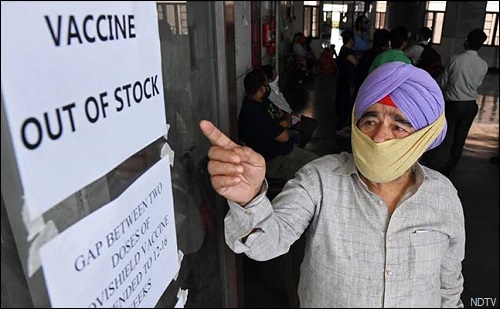
|
|

|
|
| April 20, 2024 |
|
WHO doesn't see pandemic ending until at least middle of 2022 
While life seems to be returning to normal in some places, the World Health Organization (WHO) called people "fools" if they feel the pandemic is over, which the organization doesn't see happening for likely another year.
The WHO deemed the outbreak of SARS-CoV-2 a pandemic in March of last year and championed the successful development of the vaccine for being key to bringing an end to the death and economic destruction caused by the virus. However, the WHO has expressed extreme disappointment with countries' failure to help vaccinate low and middle-income countries, a decision that the head of the organization sees as preventing the pandemic from ending. On Wednesday, WHO Director-General Dr. Tedros Adhanom Ghebreyesus announced a global goal of vaccinating at least 10 percent of every country's population by September. Ghebreyesus hopes to reach 40 percent by the end of the year and then 70 percent by the middle of next year. "These are the critical milestones we must reach together to end the pandemic," Ghebreyesus said. "[The pandemic] will end when the world chooses to end it, because the solutions are in our hands." More than 2 billion people have been vaccinated against COVID-19, accounting for about a fourth of the global population, which is well below the 70 percent needed to potentially reach herd immunity, Ghebreyesus has grown frustrated that a large portion of those vaccinations are in only a few countries. He called vaccine inequity both a "moral failure" and "epidemiologically and economically self-defeating." Health experts have pointed out that low vaccination rates in certain areas of the world allow the virus to spread and increase the possibility of new mutations forming. While vaccines have been effective against the current mutations, the more mutations that pop up, the more likely it is that one will be able to escape the vaccines. In the event that happens, Ghebreyesus warned that new vaccines would have to be developed and the whole world would have to be re-vaccinated. The United States has almost reached the 70 percent threshold but significant disparities exist between states. Ten states aren't projected to vaccinate 70 percent of their population until 2022, according to a tracker maintained by Brown University, and West Virginia may not hit that level until 2023, if the current pace continues. States with low vaccination rates are seeing surges in cases, raising concerns about the threat it poses to the entire nation. Some areas where cases are rising, such as Los Angeles, are reinstituting mask mandates and some officials are warning that if vaccination rates don't rise, they'll reinstitute restrictions. Reaching the target of vaccinating 70 percent of every country's population requires 11 billion doses of the vaccine, according to Ghebreyesus. To fill immediate gaps in vaccine supplies, Ghebreyesus said affluent countries need to start sharing doses instead of stockpiling ones in the event a booster shot is needed. However, that's just a short-term solution, according to the director-general, and he said the world needs to "dramatically" increase the number of vaccines that are being produced to help lower-income countries. "There are many diseases for which we lack vaccines, good tests and effective treatments. Not so for COVID-19. We have all the tools we need," Ghebreyesus said. "That means ending the pandemic is not fundamentally a test of scientific discovery, financial muscle or industrial prowess; it's a test of character."(Source: Newsweek) Story Date: July 25, 2021
|